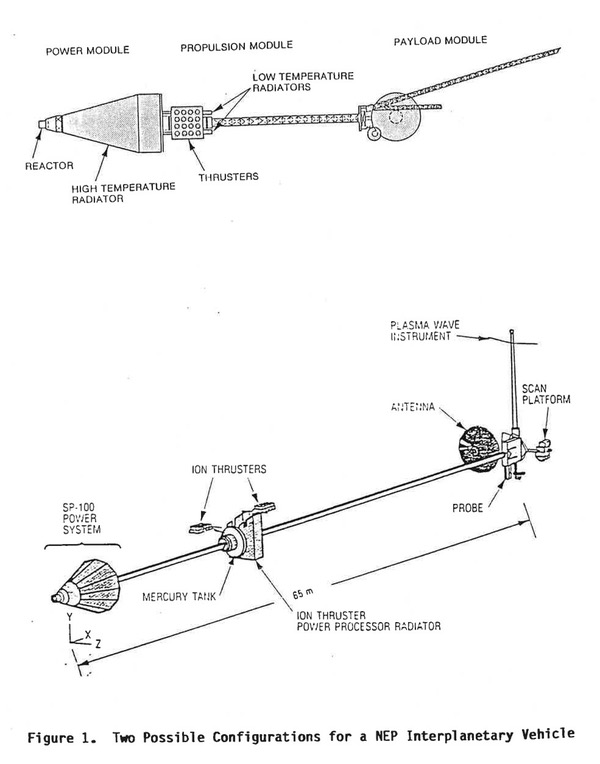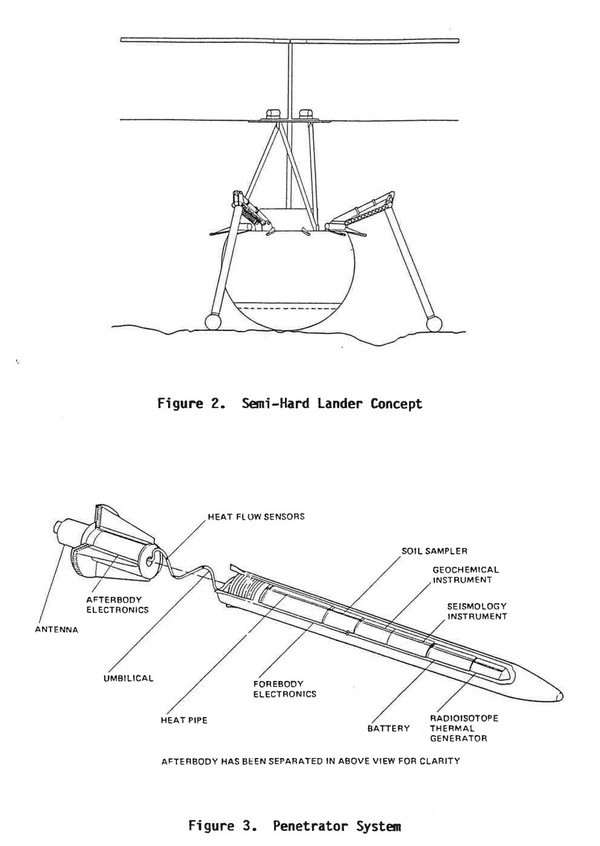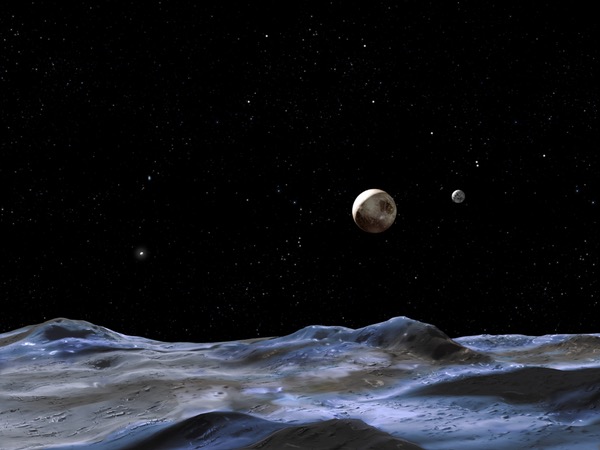Way out there in The Black: orbiting Plutoby Dwayne Day
|
| The orbiting spacecraft would be complex and ambitious, not to mention expensive. |
In the mid-1980s, a company named Science Applications International Corporation (SAIC, which has since split into two companies, SAIC and Leidos) had a contract with NASA’s Solar System Exploration Division to study advanced planetary science missions. The SAIC contract was to produce a new volume of a series previously produced by the Jet Propulsion Laboratory and covering missions “of a high priority to, or recommended by, the planetary science community and its various ad hoc committees.” These included missions such as Mercury orbiters, Venus Sample Return, the ubiquitous Mars Sample Return, and outer planet missions as well. Several of the missions studied, such as a near Earth asteroid rendezvous spacecraft, Cassini, Galileo, and Mars Observer, were either built, in planning stages, or gaining increased support within the planetary science community. Others, such as a Saturn Ring Rover and a Neptune Flyby/Orbiter With Probe, have not gained a lot of support.
One of the missions studied by SAIC was for a Pluto/Charon Orbiter With Dual Landers. SAIC’s report devoted only ten pages to the Pluto mission, including outlining some of the key scientific questions about Pluto such as the presence of an atmosphere, its surface morphology and composition, and how Pluto interacts with the interplanetary medium. The report identified some ambitious science objectives for an orbiter mission, including conducting in situ surface investigations on both Pluto and Charon using either hard landers or penetrators.
 |
The orbiting spacecraft would be complex and ambitious, not to mention expensive. According to the report, it would use a space station-based two-stage Orbital Transfer Vehicle to boost the spacecraft on its way. Then a Nuclear Electric Propulsion (NEP) system would take over, providing thrust for the eight-year journey to Pluto. The spacecraft would then use “spiral capture mode” to get into orbit around Pluto and Charon and maneuver into the proper orbit.
The report’s authors expected that the Pluto orbiter would essentially be part of a series of outer planet spacecraft to Saturn and Neptune and therefore would be based upon proven hardware from those missions. The spacecraft would consist of a small nuclear reactor along with its cone-shaped radiator panels on one end of a long boom with an ion thruster propulsion module mounted along the boom, and then the payload module with the instruments, landers, and communications gear at the other end. At the time, the United States was working on small nuclear reactor development as part of the Strategic Defense Initiative, so it was not a huge stretch to conclude that eventually such a power source could be used for planetary missions.
The instrument suite was essentially what one would expect in 1986: a CCD imager, magnetometer, plasma detector, radar altimeter, and other instruments, adding up to a total payload mass of 105 kilograms and requiring 77 watts of power from the spacecraft’s small nuclear reactor.
As it passed Charon, the spacecraft would deploy a hard lander to the moon. A second, identical lander would stay attached to the main spacecraft until after it had conducted a survey of Pluto’s surface and mission controllers had identified a landing spot. The landers would have a three-axis seismometer, “facsimile camera,” temperature sensor, magnetometer, and alpha-proton backscatter/X-ray fluorescence spectrometer.
| The Pluto/Charon Orbiter really only made sense in the context of an active space nuclear reactor development program and a series of outer planet missions. |
The battery-powered hard lander would be based upon a JPL design study for a Ganymede hard lander. It would be a spherical shell with a crushable bottom. After smacking into the surface, it would deploy landing legs from its top, sort of like a spider, using the legs to level the vehicle. Its data would be sent to the orbiter for relay back to Earth.
 |
The Pluto/Charon Orbiter really only made sense in the context of an active space nuclear reactor development program and a series of outer planet missions. But the nuclear reactor program was canceled within a few years as SDI shifted focus to ground-based systems, and NASA did not seek to develop other outer planet spacecraft after Cassini. What is odd is that the report did not also consider a Pluto flyby mission, although scientists began proposing them in the early 1990s, with starts and stops, until New Horizons finally got approval in the early 2000s.
Orbiting Pluto is tough. The dark little globe is so far out in the solar system that it takes a long time to get there even at high velocity. And high velocity creates greater difficulty for slowing down and entering orbit. It’s not impossible, however, and the debut of larger and more powerful rockets creates more engineering opportunities. Despite the lobbying efforts of a small community, the United States has not restarted work on small space nuclear reactors, and although there have been proposals for pairing electric propulsion with proven and more traditional radioisotope thermoelectric generator (RTG) power systems, nobody has done extensive engineering studies on them. The power converter for an electric propulsion system is a relatively complex device, so despite NASA’s extensive experience with both RTGs and electric propulsion, this may be a more complex integration challenge than it seems at first glance.
SAIC’s Pluto Orbiter is almost certainly not how engineers would tackle the challenge today. But maybe if New Horizons spots something interesting on Pluto’s surface—a monolith, maybe?—we will see serious proposals for Pluto orbiters in the future. Certainly after New Horizons people will begin asking what is the next step for our exploration of the outer, outer solar system.
